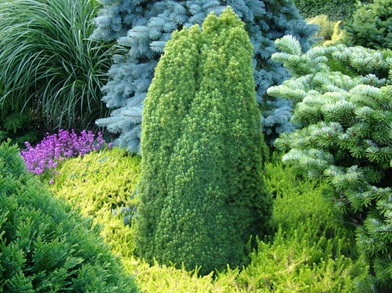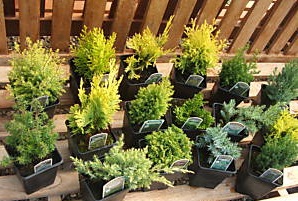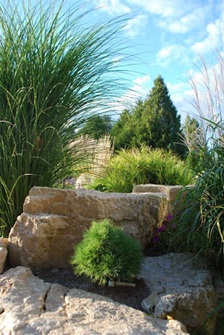Categories
Calendars
Guides
Reviews
Archive
Gallery
Articles
Ask Our Gardening Expert
Dwarf Conifers
They range in colour from greens to yellows, greys and blues. In form, they can be seen tall, slender, rounded or partly spherical. There are prostate, weeping and erect types. Foliage is as varied as their full size counterparts. With thoughtful planting, they create a variety of shape, texture and form that provides year-round interest.
Dwarf conifers showing a variety of shape, texture and form.
“Dwarf” conifers are not separate species but smaller and slow growing varieties of their full size counterparts. It is sometimes difficult to recognise dwarf types as juvenile foliage is often quite different from the full grown form. It is best to make sure that a full size tree is not introduced to the garden in error. Check the plant description when buying.
Check the description before buying.
Conifers added to rockery
They can be planted individually to make a statement or they may be planted in conjunction with others to form a contrast of form and colour. They can also be used to form a ground cover. low, spreading types and the taller types inhibit weed growth by shading the soil and dropping their foliage. Dwarf conifers can be added to rockeries to complement alpine plants, spreading conifers can soften the edges of hard landscaping or mask unsightly manhole covers.
Conifers used to soften path edges
Dwarf conifers are easy to maintain and excellent subjects for a small garden. They can be grown singly in containers, grouped or as part of a garden bed.


